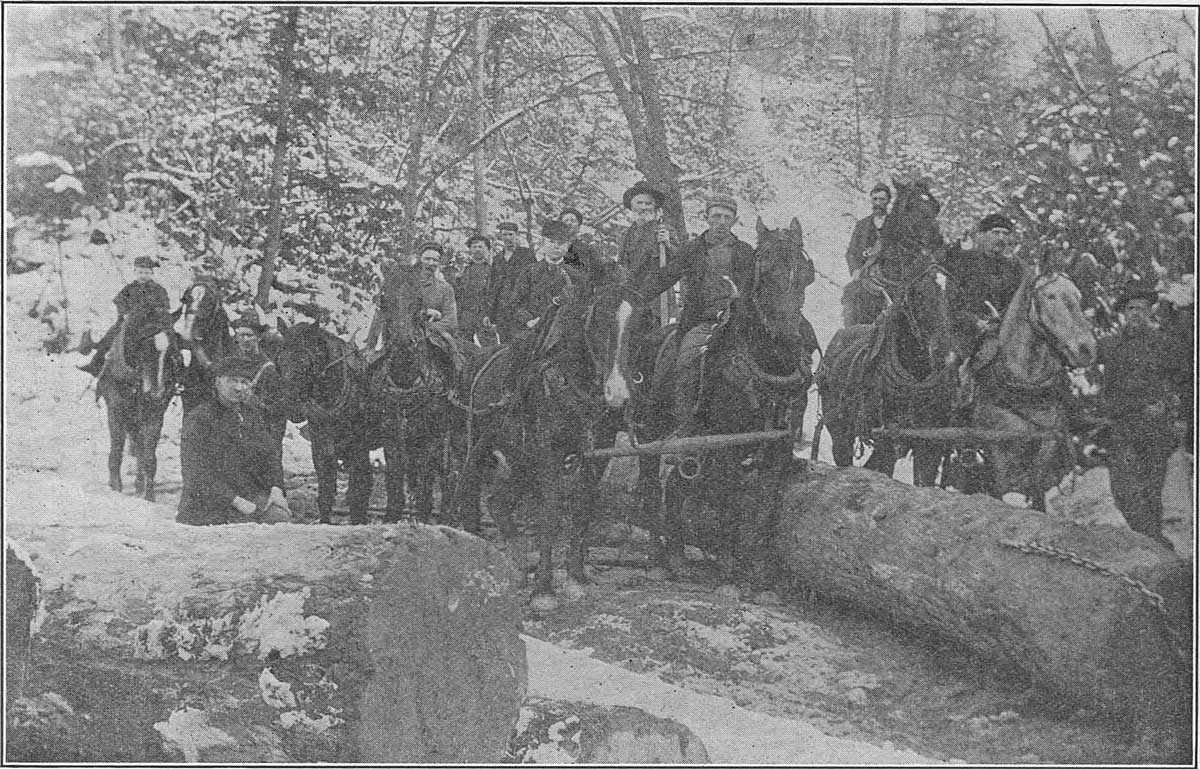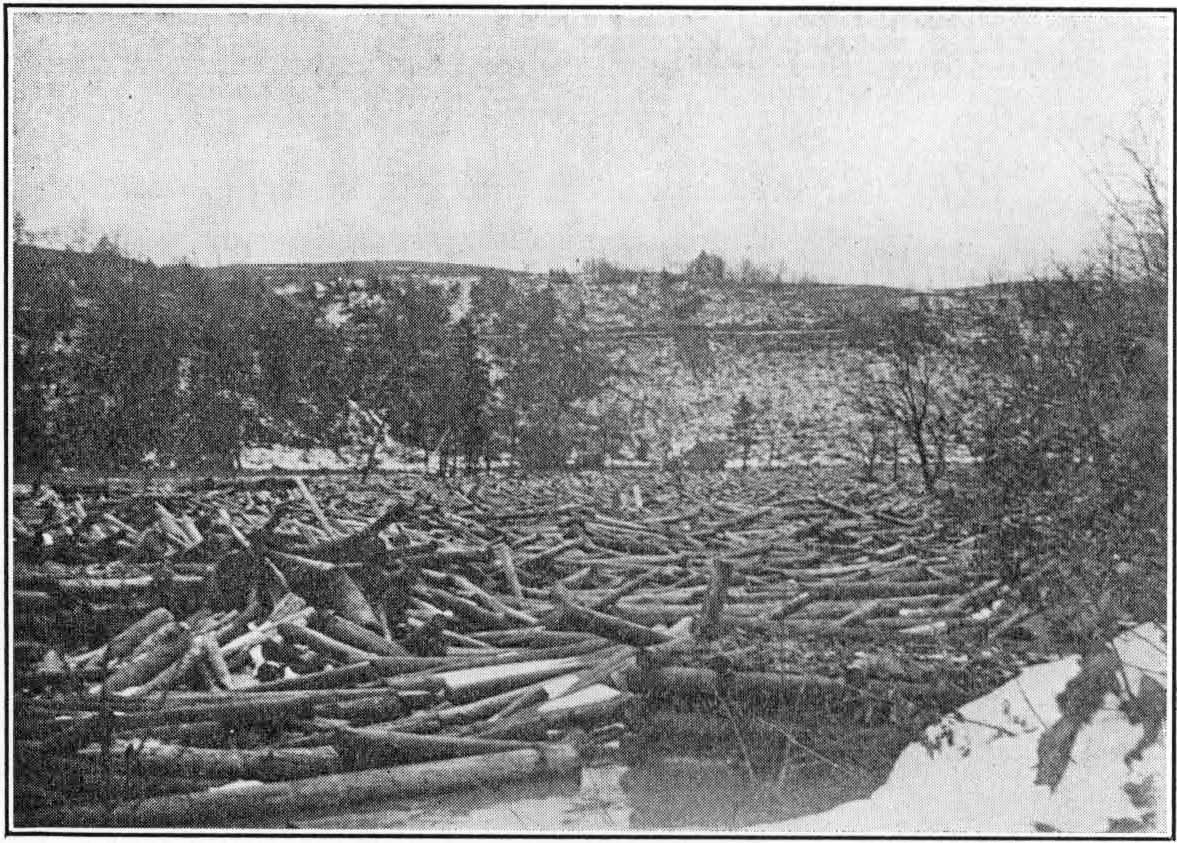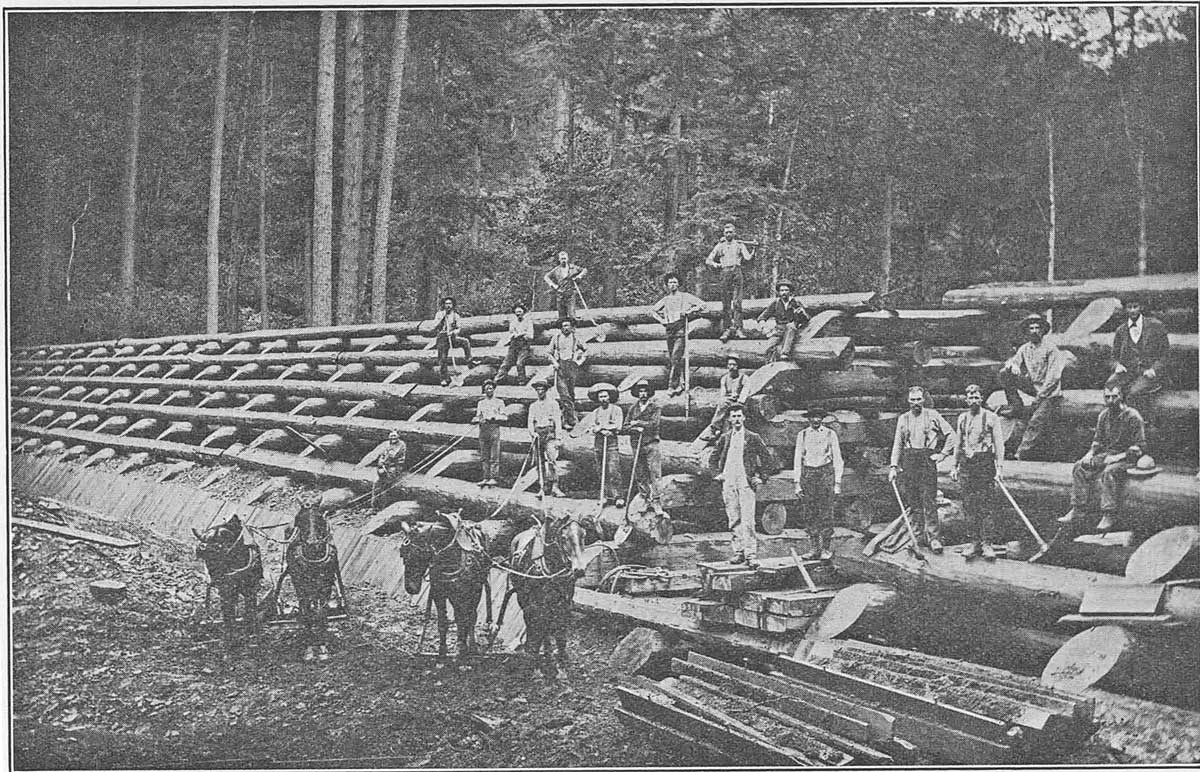|
195 CLEARFIELD COUNTY - PRESENT AND
PAST
the latest appliances and the logs were brought-to the mills on tram roads
equipped with small locomotives.
The number of carloads of lumber manufactured in the
DuBois mills in 1886 was enormous as follows: Shook, 545 carloads, Shingles and
lath 199 carloads, lumber 1848 car loads. Total for the year 1886, 2592 car
loads.
The Big Mill at Curwensville cut a good deal of lumber,
though the mill was not a financial success. Lee & Wrigley had large and
efficient mills in different sections of the county in the 90's.
"The first saw mill in the county was built at the
mouth of Montgomery Creek by Jacob Henney in 1798." The Ogdens soon after built
one onMoose Creek, and before long these little mills were scattered all over
the county on the various small streams and the river, all run by water power.
Of course most of them could not run in the dry season, but only in spring and
fall. When farming time came, people were too busy to run the mills.
It is a mistake however, to think that these
old-fashioned little water mills were inefficient or not economical. Their cost
was mainly labor, their upkeep was small and most of them were really one-man
propositions.
A man who ran one of these old sash saw mills told the
writer that on his mill he had cut 2000 feet of lumber in a day, doing all the
work himself, whereas on the newer circular saw mills, 1000 feet per man was
considered a good day's average sawing.
Most of the lumber manufactured in the county today is
sawed on small portable mills, run by steam or gasoline engines, or by electric
power.
The Labor of Timber Making, Rafting and Logging. An old
timber maker, raftsman and logger told me of his work.
|









